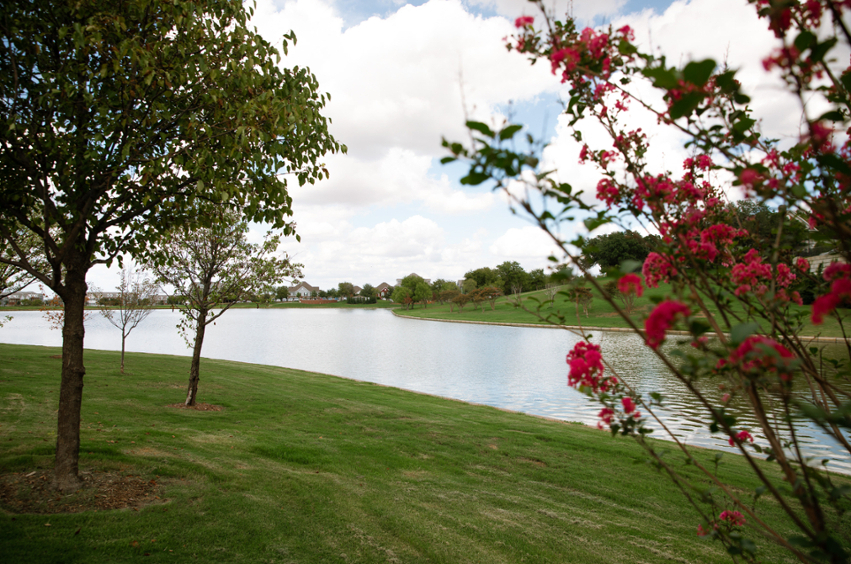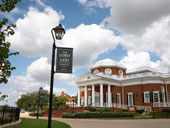Evangelism through Beauty: Friday Symposium with Rev. David Miller
This article is over six months old and may reference former titles for DBU faculty or staff, discontinued programs, or other details that have since changed. If you have any questions, please contact us at news@dbu.edu, or (214) 333-5172.

On Friday, October 21, during the 12 o'clock hour, DBU was pleased to welcome Reverend David Miller to speak at the on-campus weekly symposium held in the Rogers Theater. Students were given the opportunity to hear Rev. Miller read aloud his essay entitled "Evangelism through Beauty," wherein Rev. Miller explores the role of beauty in our efforts to share the gospel of Jesus Christ with others.
Reverend David Miller serves as an Associate Rector at St. Anne's Episcopal Church in Dallas, Texas. Rev. Miller is a Dallas Baptist University 2004 graduate and obtained his Bachelor of Arts and Science in Philosophy. He also earned his Master of Divinity in Theology/Theological Studies from Southern Methodist University in 2010. Prior to serving at St. Anne's, Rev. Miller worked in the realm of nonprofit development.
In the opening of his essay, Rev. Miller makes a surprising connection between the writings of St. Augustine's Confessions—"[Lord,] you have made us for yourself, and our heart is restless until it rests in you."—and Bruce Springsteen's "Hungry Heart"—"Everybody's got a hungry heart." Rev. Miller explains that behind these two very different works lie the same truth: everyone feels an innate desire for more. "We are designed for God and the only way to find fulfillment is through Him," Rev. Miller explains. "Nothing in our lives, no matter how significant or good it may be, can fulfill the yearning, the restless desire that is inside all of us."
This desire that stirs within each of us causes us to pursue what is good and what is true. Rev. Miller describes this as "an insatiable hunger for that which transcends our material existence." It is at this point that Rev. Miller introduces the three woven concepts of truth, goodness, and beauty.
"To know that which is true is to know something about God. Likewise, to live in conformity to that truth is to participate in God's goodness, and to have a genuine experience of beauty is to have an experience with the truth and goodness of God," Rev. Miller says. "In other words, since God is goodness, truth, and beauty itself, there is no way of having a genuine experience of beauty that leaves us isolated from goodness and truth. We cannot experience beauty without seeing that which is both good and true."
Rev. Miller explains that there are three main approaches to evangelism: leading with truth, leading with goodness, and leading with beauty. Each of these ideas are inseparable and work in tandem with one another to tell in full the gospel story. Rev. Miller uses the conversion story of Aaron Jean-Marie Lustiger (a French Cardinal in the 1980s) to explain this concept in action. After being sent to live with a Christian family during Hitler's reign, it wasn't until Jean-Marie was standing in a cathedral amid the beauty of liturgy, stained glass, and incense, that "he was enchanted and touched at the level of his soul." It was then that Jean-Marie placed his trust in Christ.
Jean-Marie's conversion shows us that "our experiences with beauty are not isolated from goodness and truth; rather, they open the door for them to come into our lives," Rev. Miller says. "...beauty, goodness, and truth are a package deal because they are an integral part of who Jesus Christ is. Since he is God in the flesh, Jesus is goodness, truth, and beauty itself."
While leading with the truth of Christ or the goodness of Christ is common and effective in sharing the gospel, Rev. Miller argues that leading with beauty "goes beyond words and touches a person at the level of the soul." The beauty we see each day demands a divine Creator. "Whether it is a stunning sunset, or a remarkable performance, or a lovely piece of music, or the life of a saint, beauty is present in these things because wholeness, harmony, and radiance have come together," Rev. Miller explains. "The perfect coming together of wholeness, harmony, and radiance happened in Jesus Christ. Jesus was completely whole because he did not miss the mark in relationship to God." This is what makes Jesus Christ so beautiful.
When reflecting on Jean-Marie's story, Rev. Miller explains that "a true experience with beauty carries with it both goodness and truth...Leading with beauty is meant to enchant the senses and to baptize the imagination so as to open the door for goodness and truth to enter."
In concluding his essay, Rev. Miller ends where he started with St. Augustine's Confessions. "Late have I loved Thee, O Beauty so ancient and so new," St. Augustine says, "late have I loved Thee!" The truest, purest, most-profound beauty is fully represented not by a vague idea, but a name. "...goodness and truth are found in the beauty of one person," Rev. Miller says, "Jesus Christ."
Emmalie Ellis writes for the University Communications department at Dallas Baptist University.








